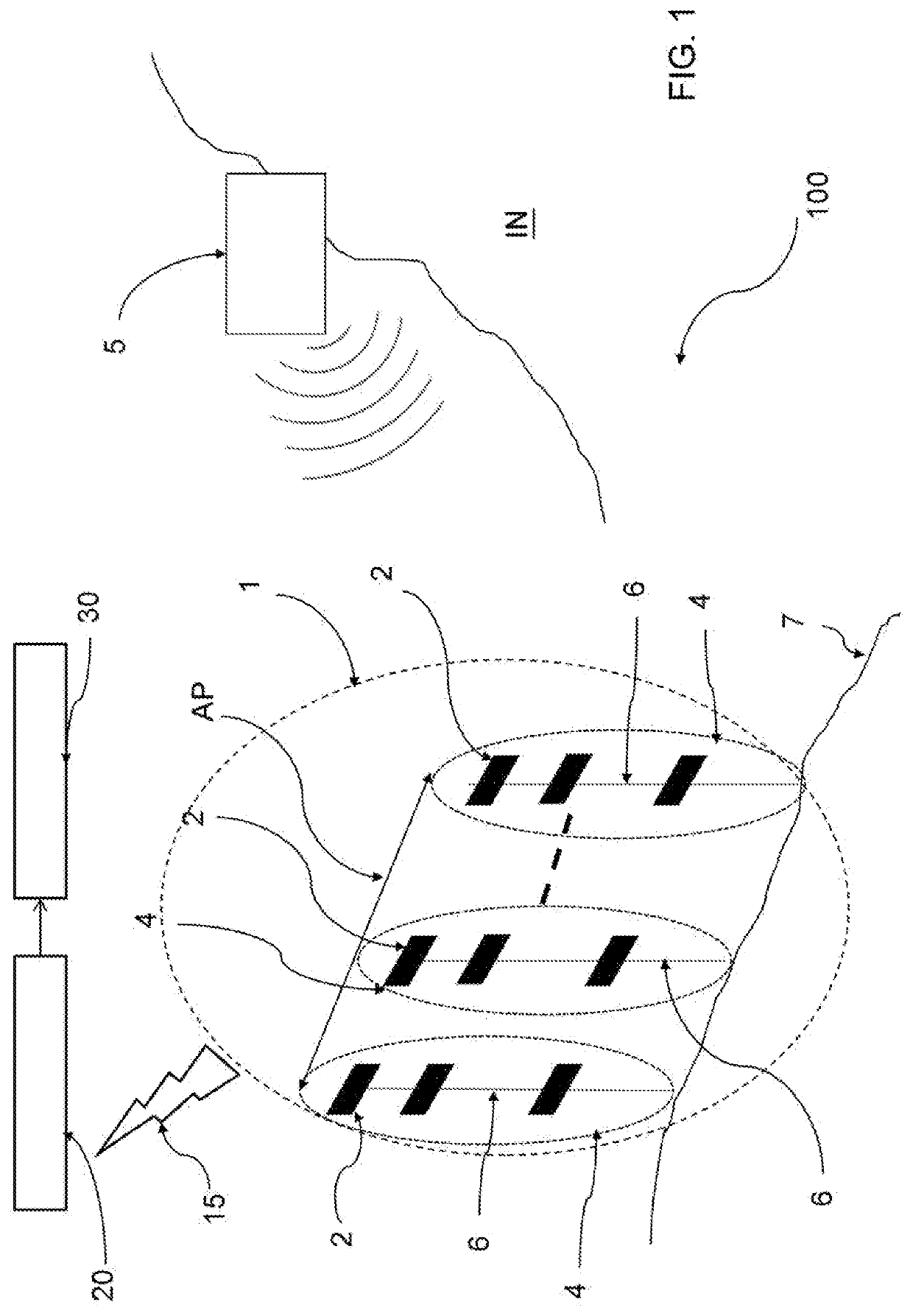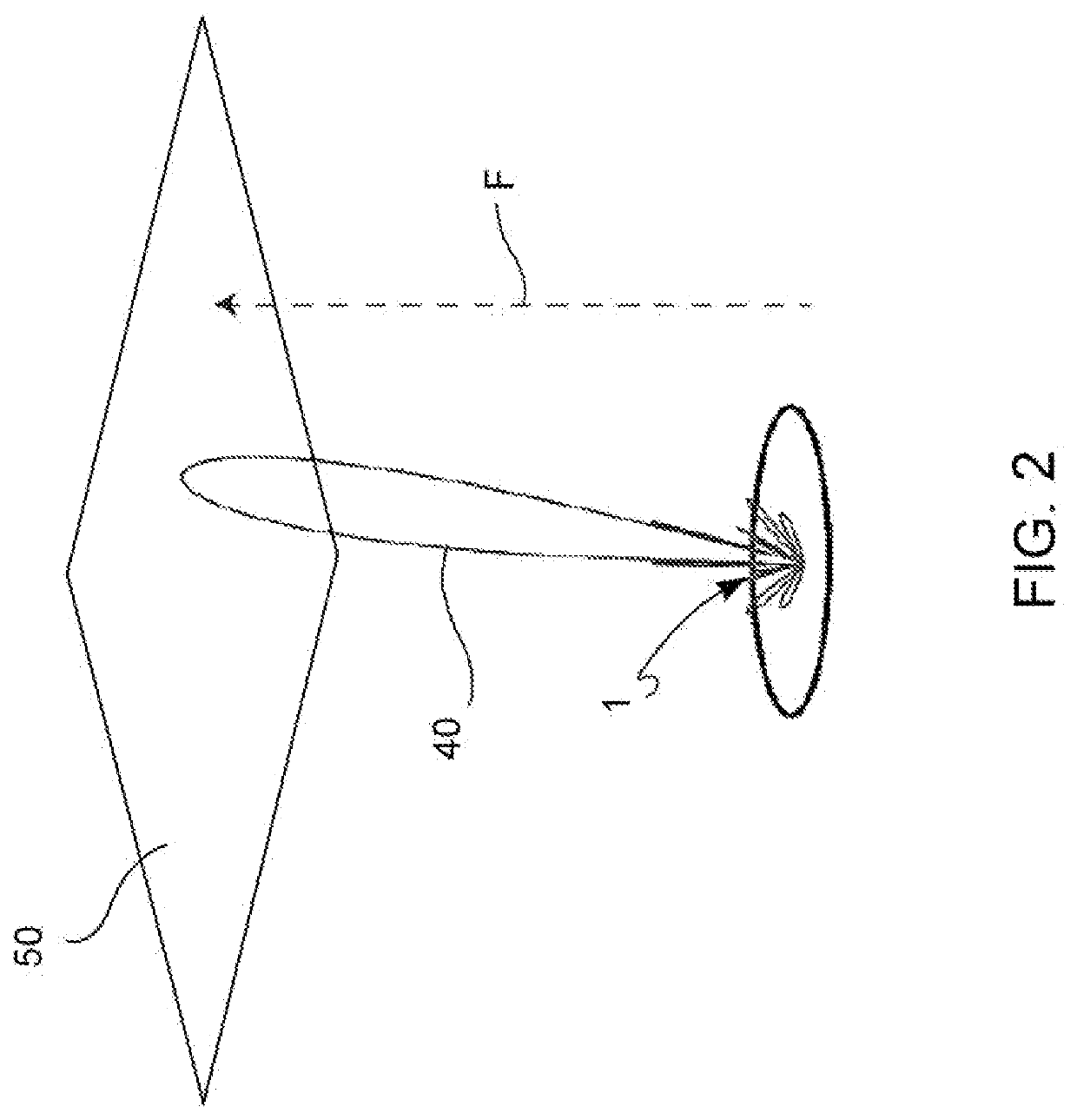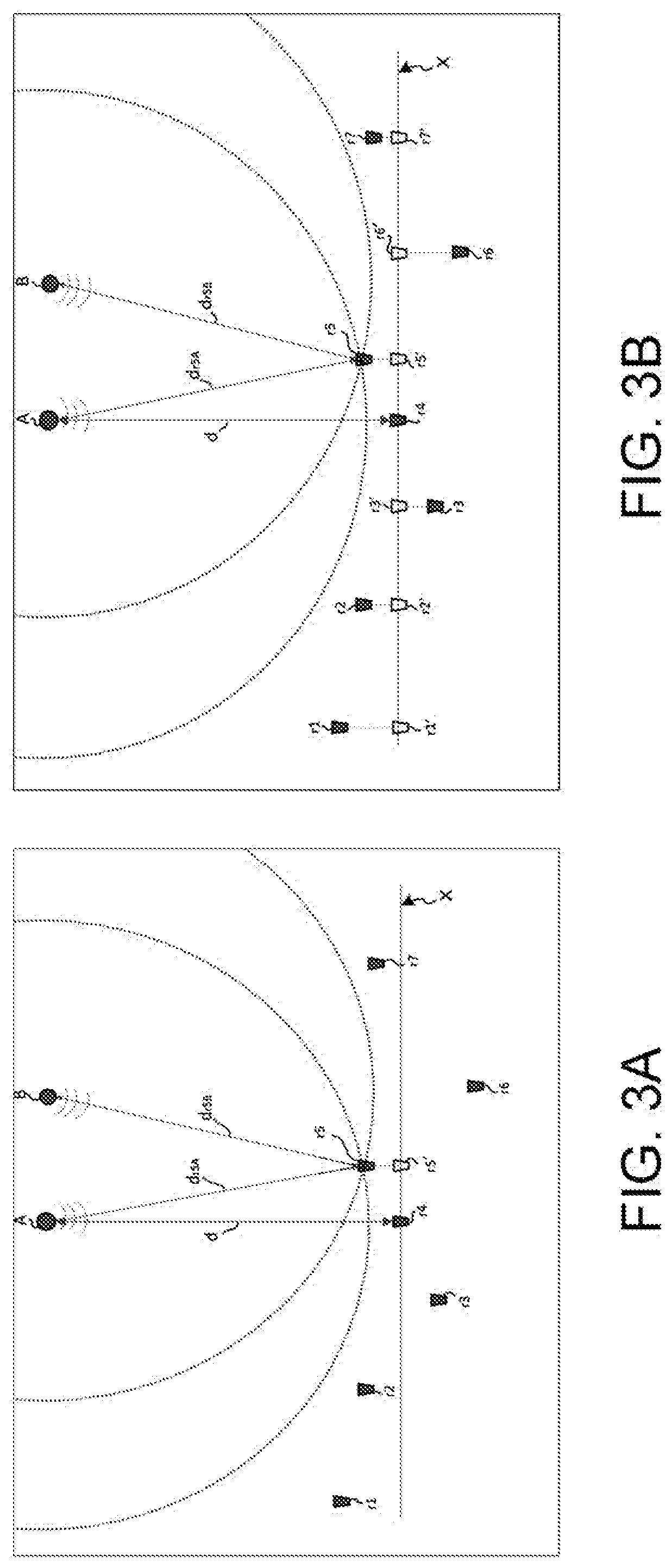Acoustic system for detecting and locating low intensity and low frequency sound sources and related locating method
a low-intensity and low-frequency sound source technology, applied in direction finders using ultrasonic/sonic/infrasonic waves, instruments, electrical transducers, etc., can solve the problems of insufficient detection ability, known solutions have limitations and drawbacks, and system does not use a consistent acoustic array, etc., to achieve the effect of increasing detection ability and increasing sensitivity
- Summary
- Abstract
- Description
- Claims
- Application Information
AI Technical Summary
Benefits of technology
Problems solved by technology
Method used
Image
Examples
Embodiment Construction
[0038]With reference to FIGS. 1 and 7, the acoustic system for detecting and locating low intensity and low frequency sound sources in an investigation area IN according to the invention, is indicated as a whole with numeral 100.
[0039]Such an acoustic system 100 comprises a suite 1 of acoustic sensors or receivers 2. Such a sensor suite 1 in particular comprises M groups 4 of sensors 2 distributed in an investigation area IN, in which the sensor suite 1 has a width or aperture AP.
[0040]Each sensor group 4 of the suite preferably, but not exhaustively, includes N acoustic sensors 2, for example N microphones vertically arranged along a common support 6, for example a microphone support connected to ground 7. Thereby, the acoustic system 100 comprises a suite 1 including M×N acoustic sensors 2.
[0041]The acoustic sensors 2 of the suite in particular may be randomly distributed in the investigation area IN to detect acoustic signals generated by the low intensity and frequency sound sou...
PUM
 Login to View More
Login to View More Abstract
Description
Claims
Application Information
 Login to View More
Login to View More - R&D Engineer
- R&D Manager
- IP Professional
- Industry Leading Data Capabilities
- Powerful AI technology
- Patent DNA Extraction
Browse by: Latest US Patents, China's latest patents, Technical Efficacy Thesaurus, Application Domain, Technology Topic, Popular Technical Reports.
© 2024 PatSnap. All rights reserved.Legal|Privacy policy|Modern Slavery Act Transparency Statement|Sitemap|About US| Contact US: help@patsnap.com










